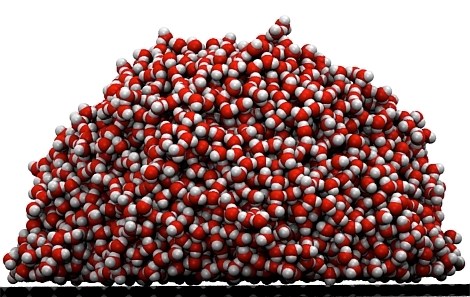Published
How ‘Transparent’ Is Graphene, Researchers Ask?
MIT researchers find that adding a coating of graphene has little effect on how a surface interacts with liquids — except in extreme cases.

The amazing electrical, optical and strength properties of grapheme ‑ a single-atom-thick layer of carbon ‑ have been extensively researched over the last decade. Recently, the material has been studied as a coating that might confer electrical conductivity while maintaining other properties of the underlying material.
But the “transparency” of such a graphene coating to wetting — a measure of the degree to which liquids spread out or bead up on a surface — is not as absolute as some researchers had thought. New research at MIT shows that for materials with intermediate wettability, graphene does preserve the properties of the underlying material. But for more extreme cases — superhydrophobic surfaces, which intensely repel water, or superhydrophilic ones, which cause water to spread out — an added layer of graphene does significantly change the way coated materials behave.
That’s important, because these extreme cases are generally of greatest interest. For example, coating a superhydrophobic material with graphene was seen as a possible way of making electronic circuits that would be protected from short-circuiting and corrosion in water. But it’s not quite that simple, the new research shows.
The findings were recently published in the journal Physical Review Letters by professors Daniel Blankschtein and Michael Strano, graduate student Chih-Jeh Shih, and three other MIT postdocs and students.












